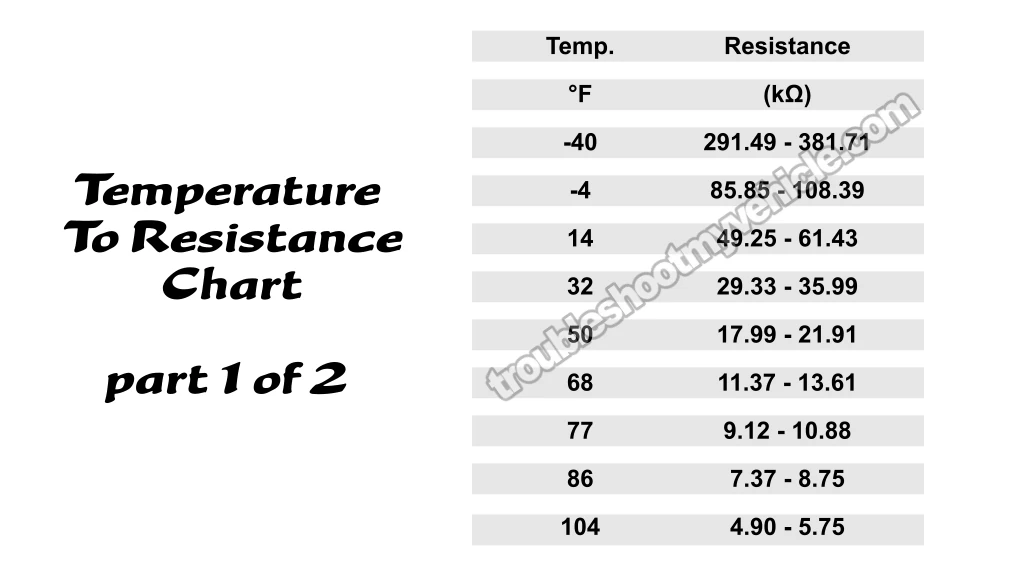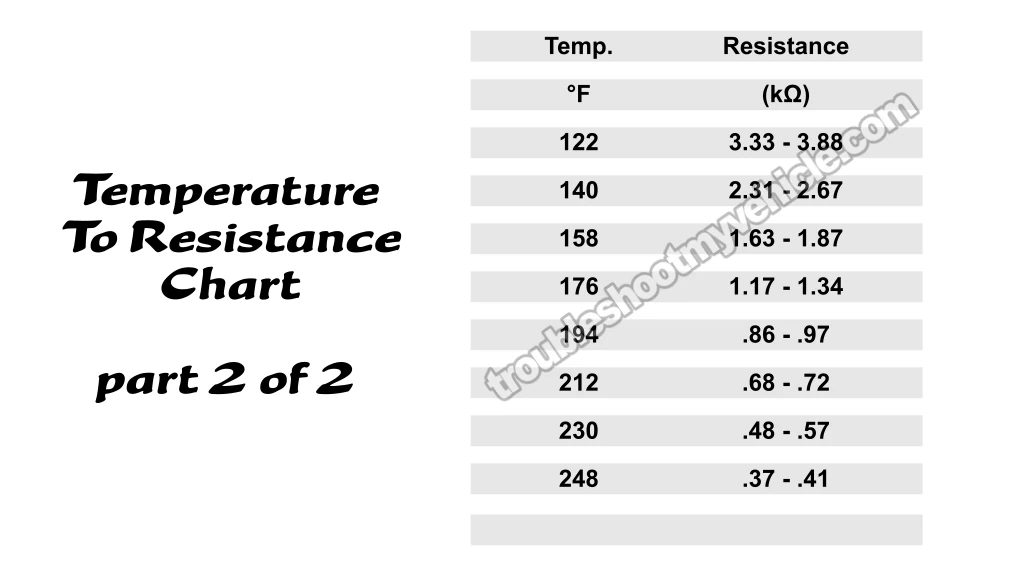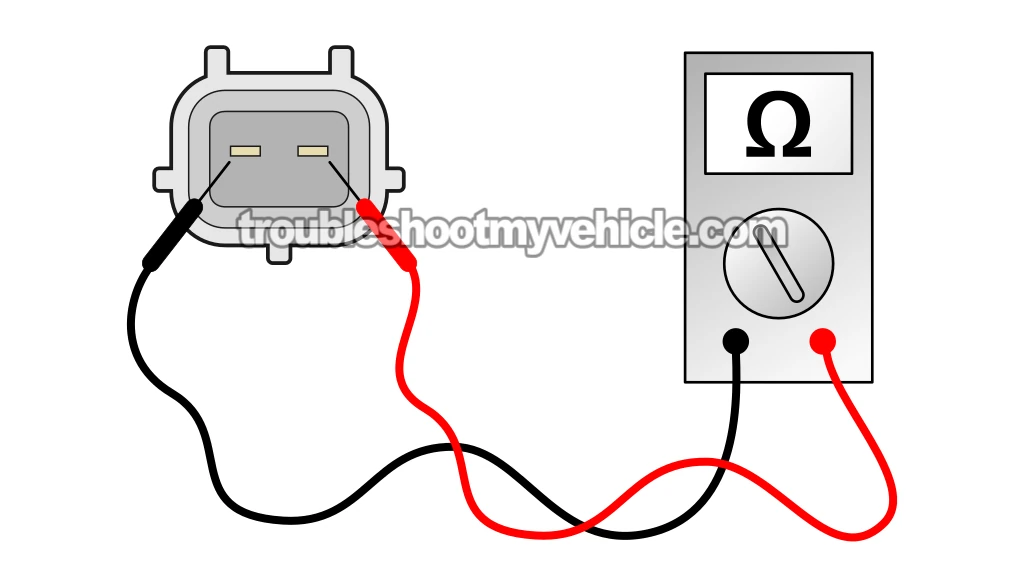
The intake air temp (IAT) sensor's job is to detect and report the temperature of the air flowing through your V8 Dodge Ram pickup's intake manifold. When it fails, you'll see a P0112 or P0113 diagnostic trouble code (DTC) triggering the check engine light (CEL).
I think you're gonna be surprised just how easy it is to check (to see if it's working correctly, or if it's bad).
In this tutorial, we'll walk you through the IAT sensor test using a multimeter, so you can figure out if it's functioning as it should. I'm also gonna help you pinpoint some of the most common problems that can cause an IAT sensor trouble code.
NOTE: The intake air temp (IAT) sensor is also called the air charge temp (ACT) sensor –but they're the same thing!
Contents of this tutorial:
- Symptoms Of A Bad Intake Air Temperature (IAT) Sensor.
- What Does The Intake Air Temperature (IAT) Sensor Do?
- Common Intake Air Temperature (IAT) Sensor Problems.
- Initial Checks Before Starting The IAT Sensor Tests.
- Where To Buy The IAT Sensor And Connector.
- Checking Temperature To Resistance Value Relationship.
- More 5.2L, 5.9L Dodge Ram Pickup Tutorials.
APPLIES TO: This tutorial applies to the following vehicles:
- Dodge Ram 1500 Pickup 5.2L V8: 1998, 1999, 2000, 2001.
- Dodge Ram 2500 Pickup 5.2L V8: 1998.
- Dodge Ram 1500 Pickup 5.9L V8: 1998, 1999, 2000, 2001, 2002, 2003.
- Dodge Ram 2500 Pickup 5.9L V8: 1998, 1999, 2000, 2001, 2002.
- Dodge Ram 3500 Pickup 5.9L V8: 1998, 1999, 2000, 2001, 2002, 2003.
Symptoms Of A Bad Intake Air Temperature (IAT) Sensor
When the IAT sensor goes bad, you're gonna get an IAT sensor trouble code stored in your PCM's memory (not to mention the check engine light shining nice and bright). You'll see one of these:
- P0112: Intake Air Temperature (IAT) Sensor Voltage Low.
- P0113: Intake Air Temperature (IAT) Sensor Voltage High.
A bad IAT sensor can also cause quite a few other problems:
- Hard starts: If the sensor isn't working correctly, especially in cold or hot weather, your engine might take longer than usual to start.
- Reduced engine power: You'll probably notice that the engine feels like it doesn't have enough power.
- Rough idle: The engine might shake or run rough when you're just letting it sit and idle.
- Engine stalls: The engine could suddenly cut out, particularly when you're at a idling with the transmission in Drive (like when waiting at a light) or accelerating down the road.
- Engine no-start In some instances, the engine simply won't start at all.
- Poor Gas Mileage: Because the PCM is injecting too much fuel, you'll see a drop in your gas mileage.
What Does The Intake Air Temperature (IAT) Sensor Do?
The IAT sensor is a thermistor, meaning it's a type of resistor whose resistance changes depending on the temperature. Its role is to inform the PCM of the temperature of the air entering the engine.
It receives a 5-volt signal from the computer, and as its resistance changes due to temperature changes, a voltage drop occurs.
The computer then monitors this voltage drop and uses pre-set calibration data to figure out the temperature of the air entering the engine.
How does it fit into your Dodge Ram pickup's fuel injection system? Well, in a nutshell, your truck uses a speed-density fuel injection system. This means that the computer doesn't use a mass airflow (MAF) sensor to know how much air the engine is taking in.
Instead, it uses three key pieces of information from three different sensors to figure out the engine's air intake. Once it calculates this, it knows how much fuel to spray into the engine.
The computer relies on these three main inputs:
- Your engine's speed, measured by the crankshaft position (CKP) sensor.
- The intake manifold vacuum pressure, which the manifold absolute pressure (MAP) sensor constantly monitors.
- The temperature of the air entering the engine, as reported by the intake air temperature (IAT) sensor.
To sum it all up, the PCM uses the readings from the IAT sensor, MAP sensor, and CKP sensor to fine-tune the air/fuel mixture, adjust ignition timing, and keep your Dodge Ram pickup's engine running smoothly.
Common Intake Air Temperature (IAT) Sensor Problems
It's pretty common for the IAT sensor to fail sooner or later, and here are a few key reasons why.
- Wear and Tear: Just like any other car part, your IAT sensor eventually wears out as it ages. Over time, it simply stops working correctly.
- Open Circuit Problems: Sometimes, the sensor itself develops a break within its electrical circuit. This cause the PCM to read an extremely cold (-40°F) temperature.
- Short Circuit Issues: Occasionally, there's an internal fault that causes a short-circuit. This too leads to an inaccurate high (248°F+) temperature reading sent to the PCM.
- Damaged Wiring: The protective insulation of the wires coming out of the sensor's connector can dry out or become damaged and peel off. When this happens, the copper wires can touch and create a short-circuit problem.
- Connector Problems: Disconnecting the sensor (whether you do it carefully or not) can break the locking clip on its connector (a very, very common problem). This can create a loose connection (intermittent false connection) with the PCM.
Basically, when any of these issues arise, the sensor starts sending wrong data to your PCM. This often results in noticeable engine's performance issues and an IAT sensor diagnostic trouble codes (DTCs) popping up.
Initial Checks Before Starting The IAT Sensor Tests
Before you get started with your IAT sensor test, let's run through a few quick but important checks:
- First, carefully inspect the sensor's wiring for any damage, like frayed or cut wires.
- Next, take a look at the connector and make sure there aren't any signs of damage, particularly a broken locking tab.
- Finally, check the sensor itself, especially the top part, which is made of plastic and can sometimes snap off from the metal base.
Fraying (of the connector wires) happens when the insulation around the wires gets peeled away, exposing the metal strands underneath –it's a really common issue with IAT sensor connector
If the wires are exposed, they can eventually touch each other and short out, this results in inaccurate intake air temperature readings and the dreaded check engine light coming on.
Here's an example that shows what this problem can look like:
- IAT Sensor Wire Insulation Problem And Wires Shorted Together (from: easyautodiagnostics.com).
You can tackle this problem in one of two ways:
- If you're seeing a lot of fraying, or if it's really close to the connector, the smartest thing to do is swap out the whole connector assembly.
- For minor damage, further away from the connector, wrapping it with electrical tape can be a quick fix.
NOTE: Don't rely on electrical tape as a long-term repair. I recommend replacing the connector and/or wiring whether the damage is minor or severe for a lasting repair.
Where To Buy The IAT Sensor And Connector
Disclosure: As an Amazon Associate, I earn from qualifying purchases. If my tutorials help you, using these links is an easy way to support the site at no extra cost to you. Thank you!
Checking Temperature To Resistance Value Relationship
Just to recap, the IAT sensor's resistance changes depending on the air temperature it's exposed to (specifically, the air in intake manifold).
We can easily check the IAT sensor's resistance with a multimeter in Ohms mode. Your resistance reading should directly reflect the air temperature around you (at that moment).
A good IAT sensor should show a temperature reading that's within about 10 degrees of the real-world ambient temperature in your area.
If the sensor's toast, your multimeter reading will show one of these results:
- Open-circuit issue: The multimeter will show "OL" (which means "over-limit" and confirms an open circuit or infinite resistance).
- Short-circuit issue: The multimeter will display "0 Ohms", indicating the circuit is completely shorted.
IMPORTANT: To get the most accurate reading, the sensor needs to be completely cold. If your Dodge Ram pickup's engine has been running, wait for it to cool down thoroughly before you start testing.
OK, let's get started:
- 1
Check the outside temperature where you are.
Open the weather app on your phone or if you have one, check a wall thermometer to get the temp reading. - 2
Locate the IAT sensor and disconnect it from its wiring harness connector.
LOCATION: You’ll find the IAT sensor near the front end of the intake manifold, on the passenger side of the engine. Photo 4 in the image viewer above shows exactly where it is. - 3
OPTIONAL: Gently take the sensor out of its spot on the intake manifold.
NOTE: You can run this test without removing the IAT sensor. But if it’s easier for you to take it out, go ahead and do that. - 4
Turn your multimeter to the Ohms (Ω) setting.
- 5
Test the resistance by touching the multimeter probes to the sensor’s male terminals.
- 6
Write down the resistance number that shows up on the multimeter display.
- 7
Match your reading to the values on the Temperature-To-Resistance Chart (see the chart in the image viewer above).
The resistance should line up with the expected range for your current outside temperature (within ± 10°F).
Let's interpret your results:
CASE 1: The resistance IS NOT within the correct range for the temperature around you. This means the IAT sensor isn't working correctly. Time to replace it.
CASE 2: The resistance is within the correct range for the temperature around you. This tells you the IAT sensor is working just fine.
More 5.2L, 5.9L Dodge Ram Pickup Tutorials
You can find a complete list of tutorials for the 5.2L/5.9L V8 Dodge Ram Pickup in this index:
Here's a sample of the tutorials you'll find in the index:
- How To Test The Fuel Pump (1992-2003 5.2L, 5.9L Dodge Ram Pickup).
- How To Test The TPS (1997-2003 5.2L, 5.9L V8 Dodge Ram Pickup).
- How To Test The MAP Sensor -P0107, P0108 (1997-2003 5.2L, 5.9L V8 Dodge Ram Pickup).
- Troubleshooting A Blown Head Gasket (1989-2003 5.2L, 5.9L V8 Dodge Ram Pickup).

If this info saved the day, buy me a beer!








